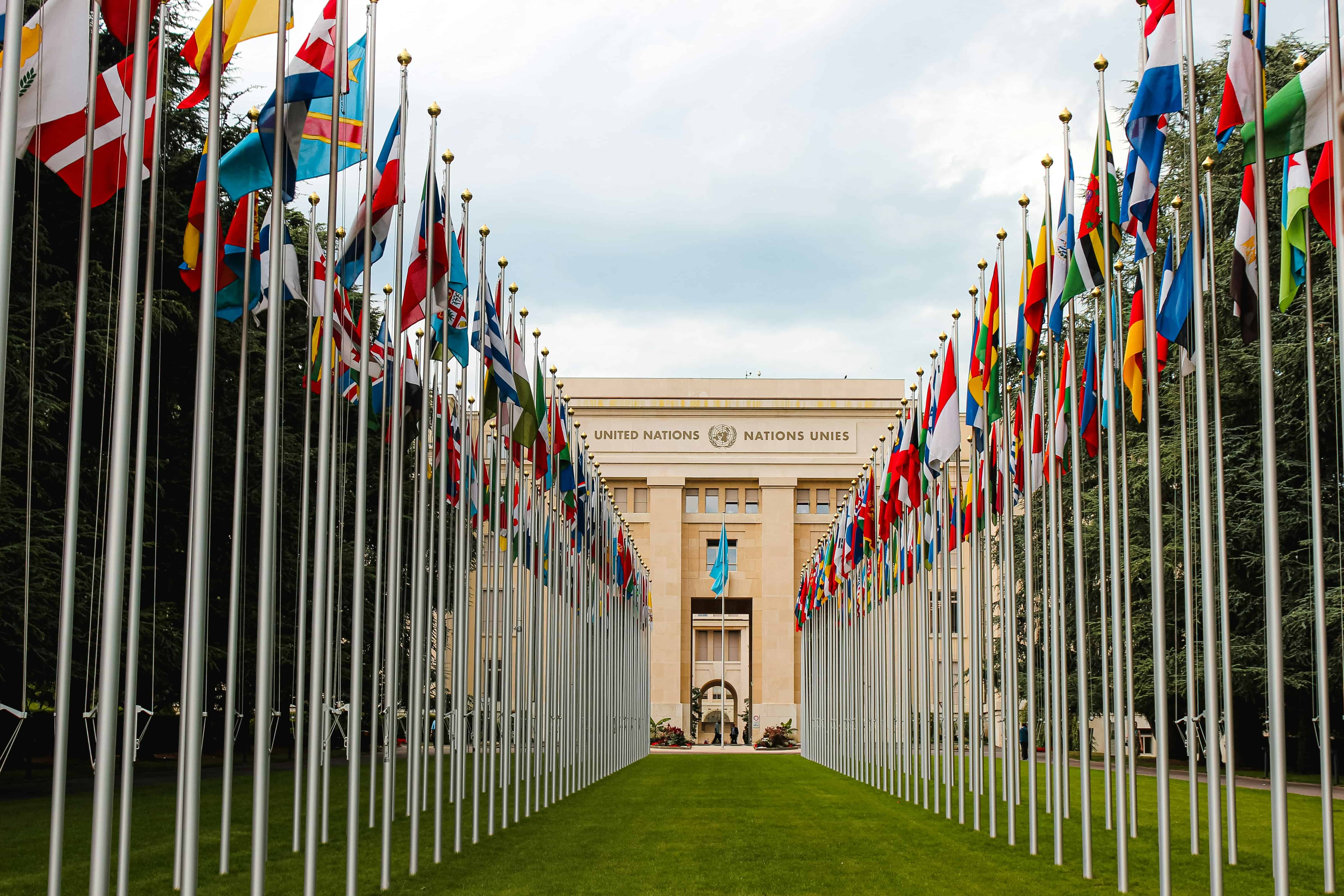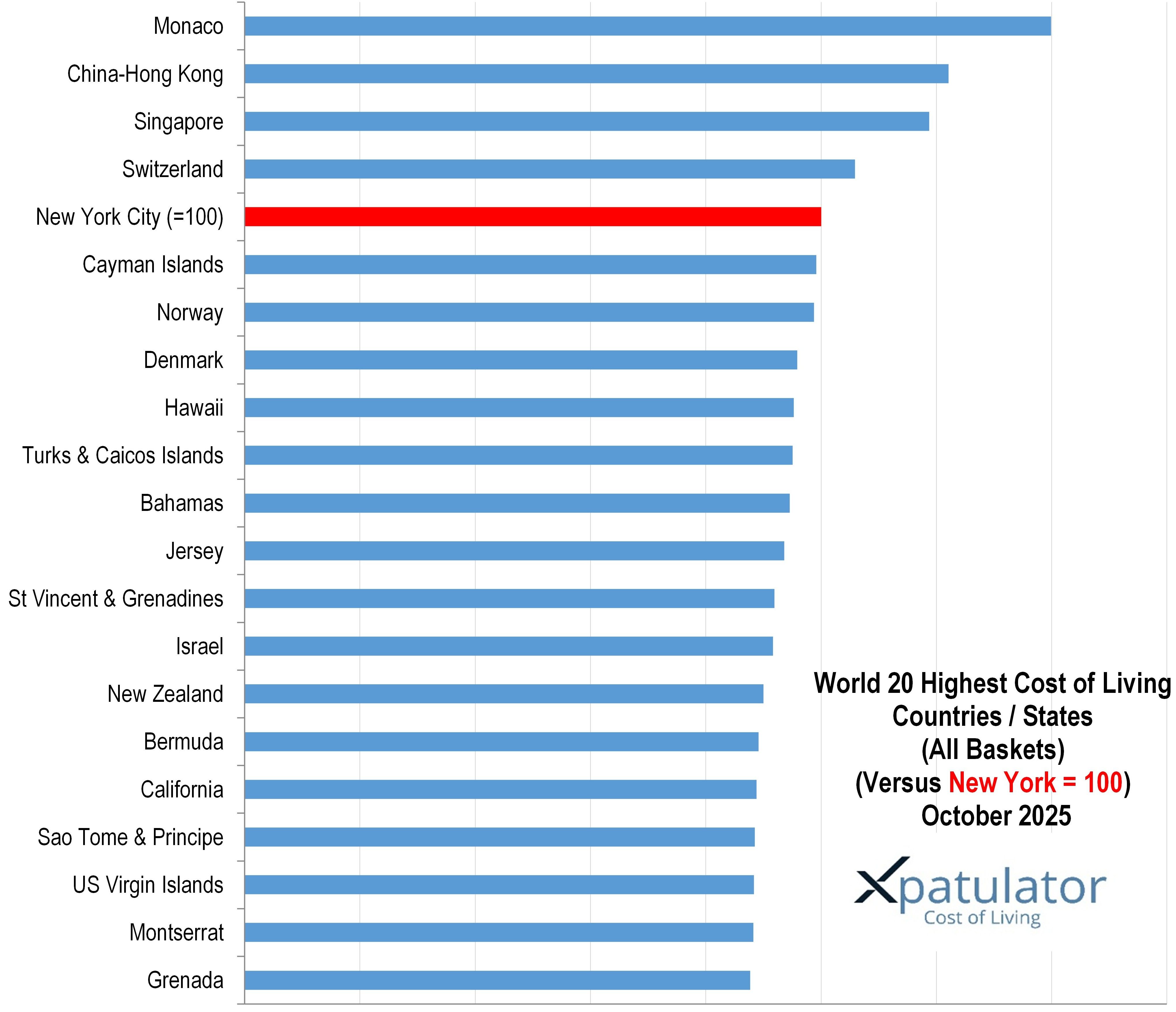
Top 20 Most Expensive Places to Live in 2025: A Global Cost of Living Guide
2025-10-01
Xpatulator’s latest global survey reveals the world’s top 20 most expensive countries and territories to live in for October 2025, with Monaco, Hong Kong, and Singapore leading the pack by a considerable margin. The rankings highlight how tiny states, offshore financial hubs, and exclusive islands—alongside powerhouses like Switzerland and major US states—dominate the cost of living index, driven by factors such as limited land, high demand, import dependence, and affluent expatriate populations. The list underscores the financial realities facing anyone contemplating relocation to these destinations: high living costs create formidable barriers for all but the wealthiest, shaping migration, talent mobility, and the everyday choices of would-be expats.
The World’s Most Expensive Countries and States in 2025
Global cost of living is evolving, but the more things change, the more they stay the same. Xpatulator’s latest quarterly survey as at October 2025, spanning 780 locations worldwide, has once again highlighted the relentless march of the cost of living in a world increasingly defined by economic disparity, exclusivity, and, for many, the simple mathematics of geography. The index uses New York City as a baseline (100), enabling global comparison.
Monaco
The highest cost of living, globally, is in Monaco. With an eye-watering cost of living index of 139.9, the Principality is not merely expensive; it is out of reach for all but the ultra-wealthy. Monaco’s micro-state status, infamous for its tax haven allure, makes it a magnet for billionaires and celebrities, ensuring that housing, food, and basic services all command a premium. With land measured in square metres, not square miles, supply is hopelessly outstripped by demand. In essence, Monaco’s cost of living is the cost of buying into a rarefied club – one with Mediterranean views and almost zero crime.

Hong Kong and Singapore
In second place is China-Hong Kong (122.1). Despite Beijing’s tightening grip, the former British colony’s property market remains one of the world’s most speculative and overheated. Office space, luxury flats, and even humble studio apartments are famously unaffordable. Add in the high cost of imported food, education, and international schooling, and the index is unsurprising.
Singapore (118.7.0) follows closely. It is not just the cost of prime Orchard Road apartments; rather, the entire city-state is calibrated for high-earning expatriates and ambitious locals. Space is limited, demand is insatiable, and imported goods – especially vehicles and groceries – are subject to formidable tariffs. Singapore’s high cost of living, however, is tempered by world-class infrastructure and public services, making the pain marginally more palatable.
Switzerland and the Nordics
Switzerland (105.9), follows Monaco at Europe’s summit of cost of living. The Alpine nation, renowned for precision, privacy, and political stability, exacts a steep premium for the privilege. Cities such as Zurich and Geneva are frequent chart-toppers in any global survey, propelled by the high price of everything from cheese to childcare. Switzerland’s strong franc, tight housing markets, and a culture of exclusivity all play their part.
The Nordics, particularly Denmark (95.9) and Norway (98.8), remain fixtures in the upper echelons of the cost of living. High wages, robust welfare, and eye-watering taxes ensure that, while quality of life is enviable, prices remain punishing. Everything from a cup of coffee to a visit to the dentist is, frankly, extortionate. Yet, as in Switzerland, many would argue that the high cost comes with an equally high return in social stability and public health.
Island Life at a Price
The rest of the top 20 is a veritable roll call of sun-kissed islands and offshore enclaves, starting with the Cayman Islands (99.2), Hawaii (95.3), and Turks & Caicos Islands (95.1). These locations share an almost pathological dependence on imports, with everything from food to building materials arriving by ship or air. The result is predictably high prices – not helped by their status as magnets for affluent tourists, offshore financiers, and tax exiles. The Bahamas (94.6), Jersey (93.6), Bermuda (89.1), US Virgin Islands (88.4), and Grenada (87.7) all sing from the same hymn sheet: great for a luxury getaway, less so for anyone on a local salary.
Some inclusions, such as St Vincent & the Grenadines (91.9), Montserrat (88.2), and São Tomé & Príncipe (88.5), may raise eyebrows. Yet the logic is consistent: small populations, limited production, and over reliance on costly imports make everyday living dear. These states, while offering idyllic surroundings, often lack the economies of scale or infrastructure to support affordable living.
The USA: Hawaii and California
Interestingly, US locations also make their presence felt, with Hawaii (95.3) and California (88.8) both comfortably inside the top 20. Hawaii’s isolation is its curse; California’s is a mix of housing insanity and local taxation. The contrast with New York City’s baseline is stark: both Hawaii and California are, on average, still more expensive to live in.
Israel and New Zealand
Israel (91.6) and New Zealand (90.0) are also in the top 20 most expensive countries. Israel’s combination of high property prices, security-driven costs, and a small, competitive domestic market keep the index high. New Zealand is not far behind, with Auckland and Wellington notorious for their rental crises and surging food prices, largely due to import reliance and a highly concentrated supermarket sector.
Cost of Living versus Remuneration: The Expat’s Dilemma
For anyone looking to relocate to these countries, the message is clear: paradise and prosperity are expensive bedfellows. High cost of living is more than an inconvenience; it is a barrier to entry, one that shapes the demography of migration, talent flows, and even corporate expansion. In most of these states and territories, only those with high earning potential, significant assets, or specialist skills can afford the price of entry. For others, the choice is either to make peace with a more modest standard of living or to look elsewhere entirely.
In the end, the world’s most expensive places are more than just statistical curiosities. They are the canaries in the coalmine of global inequality, illuminating the way that wealth, opportunity, and privilege are concentrated in an ever-narrower band of geographies. The index may change, but the underlying logic remains: exclusivity always comes at a cost.
Use Xpatulator’s Cost of Living Calculators and Tools for informed decision-making about the cost of living and the salary / allowance / assignment package required to maintain the current standard of living.